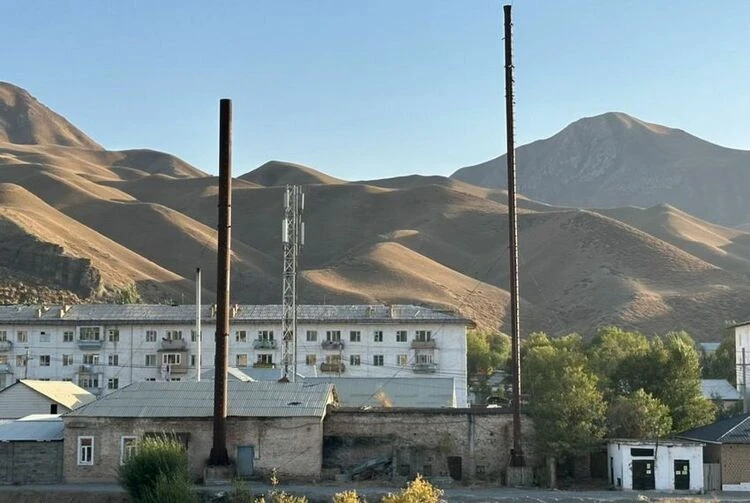In Karakol, located in the Issyk-Kul region, on Alyshebaeva Street (formerly known as Lenin), there...
In Karakol, located in the Issyk-Kul region, there is a historic house built in the late 19th to...
In Karakol, located in the Issyk-Kul region, at 143 Alyshbaeva Street (formerly known as Lenin...
In Karakol, located in the Issyk-Kul region, there is a historic building that has turned 120 years...
In Karakol, located in the Issyk-Kul region, there is a building that was erected over a hundred...
In Karakol, located in the Issyk-Kul region, there stands a building constructed after the...
On Alabakova Street, house number 155 (165) in Karakol, located in the Issyk-Kul region, a...
In the Issyk-Kul region, in the city of Karakol, there is a significant Dungan mosque. The building...
In the Issyk-Kul region, in the city of Karakol, there is an ancient building of the pedagogical...

City in Honor of N.M. Przhevalsky Starting from 1875, the growth rate of the city significantly...
In Karakol, located in the Issyk-Kul region, there has been an increase in prices for beef, lamb,...
In the Batken region, in the city of Aydarken in the Kadamjai district, there is a historical site...
In the Issyk-Kul region, in Karakol, an incident occurred when a driver lost control of their...
In Karakol, on Masaliev Street, formerly known as Fuchik, there is a racetrack covering 44...
Recently, a building that was previously used as an art gallery was transferred to the Naryn...

Nikolai Mikhailovich Przhevalsky. The first explorer of the nature of Central Asia. The residents...

Century-old Dungan Mosque Made of Pine and Fir The surroundings of Issyk-Kul are not only resort...
At the initiative of the President of the Kyrgyz Republic, Sadyr Japarov, the reconstruction of the...
Today, November 5, in Kara-Kul, Jalal-Abad region, the opening of 32 new apartments took place....

In 1888, the great Russian traveler and explorer of Central Asia, Nikolai Mikhailovich...
In the Issyk-Kul region, in the Jeti-Oguz district, there is a climate and balneological resort...
In Kara-Kul, located in the Jalal-Abad region, a fire occurred today, November 6, on the fourth...
The city of Balykchy, once an important transit point on the Great Silk Road, is now a key economic...
Cholpon Turatova, residing in the village of Karkyra in the Tyup district of the Issyk-Kul region,...

ZENKOV Andrei Pavlovich...
In the town of Orlovka, located in the Kemin district of the Chuy region, which is 114 years old,...
The press service of the State Committee for National Security (GKNB) reported on October 27 about...
In the Issyk-Ata district, located in the Chui region, the construction of a new sports complex in...
Yesterday, October 29, in the Issyk-Kul region, in the city of Karakol, a traffic accident occurred...
In Osh, the building of the "Rizvan" cafe has come under the management of the city...

Traveling along the eastern part of the Issyk-Kul Lake coast, you will definitely find yourself in...
On Gorky Street (Zhusayev) in the city of Karakol, Issyk-Kul region, there is an old house,...
On October 26, 2025, Kyrgyzstan held a Day of Remembrance for the servicemen who lost their lives...
According to information from the press service of the Ministry of Construction, the construction...
In the Issyk-Kul region, in Karakol, snow has fallen, reaching knee level. This was reported by...
The construction of a new two-story building for the district electric networks enterprise is...

The Tokmok Historical and Local Lore Museum is located in an old beautiful building situated in...
- Sadyr Japarov opened the new building of the National Bank of the Kyrgyz Republic on October 28....
In Osh, along S. Supanaliev Street, the process of demolishing a two-story residential building...
In the village of Maman, located in the Ak-Suy district, the insulation of the facade of the J....
In the village of Novovoznesenovka, located in the Ak-Su district of the Issyk-Kul region, funding...

Photo GKNB. Heating plant in Naryn According to the press center of the GKNB, the heating plant...
In Osh, the heating season will begin on the night of November 4. According to information from...